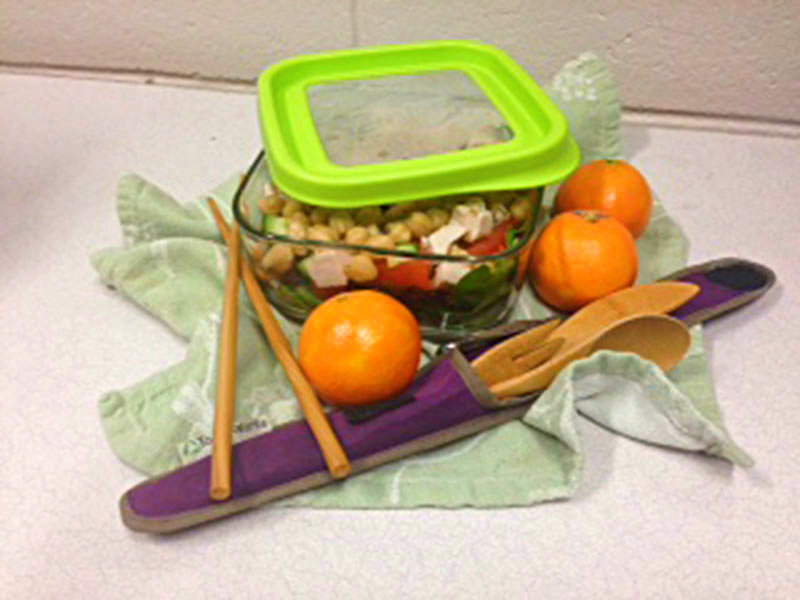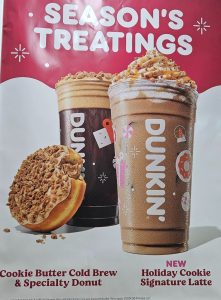Reusable lunch containers
December 18, 2015
A plastic baggie for your sandwich, a granola bar wrapper, a yogurt container, and a drink bottle. Every day. Five days a week. Forty-three weeks in a school year. Those numbers don’t include weekends and they don’t include summer vacation. That’s a heck of a lot of garbage.
And it’s only one year’s worth.
Many people pack lunches their whole lives. Let’s estimate at least 200 lunches a year, times about 50 years (taking into account that the average human lifespan is about 70 years according to a statistic from Our World In Data). That’s at least 10,000 plastic baggies. 10,000 granola bar wrappers. 10,000 yogurt containers. 10,000 drink bottles. And that is generated by only one person. Multiplied by the number of people packing lunches around the world…it adds up pretty quick.
Picture that monstrous pile of garbage in a landfill, littered alongside streets, and piled up outside poor villages in developing nations. Picture it choking and poisoning helpless wildlife, degrading our crops and livestock (which we will one day eat), and contaminating the water people are bathing in, swimming in, and most relevantly eating and drinking. What you are picturing really exists, according to articles by the Humane Society and Environmental Pollution Centers. An infographic by Ecowatch reveals that there are places in the ocean where the amount of plastic is six times the amount of plankton. According to an article by National Geographic, there are what are called “dead zones”, areas where the amount of garbage has made it impossible for any life to survive. In other places there are huge swaths of floating trash, islands, some thousands of miles long.
Why is this happening? Sometimes It’s hard to remember, isn’t it?
Our world is becoming uglier, smellier, and more dangerous. According to the Humane Society, animals are dying and species are disappearing. The infographic by Ecowatch explains that our own food (the reason for our lunch waste in the first place) is being poisoned and people are getting sick. And I’m asking you why.
There are many answers to this question, but garbage generated by innumerous wasteful lunches is a significant one. This is an important answer to focus on because of it’s large impact, but also because of our ability to affect it.
Now picture that monstrous pile of trash again, wreaking its damage on our world. But this time, imagine it without all that garbage generated from our wasteful lunches. 10,000 lunches per person. What do you see?
A lot less garbage.
Not only does packing a lunch in disposable containers generate a lot of garbage, it also costs significantly more. The cost of buying containers which can be reused over and over again, compared to the cost of buying box after box of plastic baggies, pack after pack of paper napkins, roll after roll of tinfoil, is significantly less.
According to an article by the Huffington Post, packing lunch in reusable containers could save families $417.60 per person, every year! That is a lot of money, especially considering that in many households there are several family members who need packed lunches.
There are many ways to pack a more sustainable lunch, and it’s okay to take baby steps. Some ways to pack a less wasteful lunch include buying a non-toxic, reusable lunch bag instead of a disposable one, using a reusable water bottle, packing a cloth napkin instead of paper ones, trying reusable snack and sandwich bags instead of plastic baggies, foil, or plastic wrap (these are usually made of waterproof material and are easy to rinse out and reuse), using reusable food containers made of plastic, stainless steel, or glass, and packing reusable utensils. You can pack silverware from your kitchen, or buy stainless steel or bamboo sets made especially for lunches.
Lin Illingworth, English teacher at Hollis Brookline High School, swears by her set of bamboo utensils from Mother & Child, a consignment store located in Amherst, New Hampshire. “It’s the best ten dollars I’ve ever spent — the best ten dollars ever. I am never without silverware and I never waste,” says Illingworth. The utensil set is also available on Amazon.
There are many students at HB who pack lunches in reusable containers, for a variety of reasons. “I try not to be wasteful,” says Gwen Bergstrom ‘17.
Jenna Swabowicz ‘17 says that using reusable containers “is convenient and good for the planet.” However, there are still many students at HB who pack prepackaged snacks and foods in disposable containers. It is easy to forget, or opt for the easier route.
Plastic baggies are an especially common pitfall because of their convenience, but these bags do not degrade like paper and organic wastes, according to a 2014 article by Green Talk. Instead, they photodegrade, meaning that they break down into tiny pieces small enough to be ingested by fish and other animals, and eventually can work their way up the food chain into our food.
It’s time to make an investment. The initial cost of your reusable lunch containers, the cost of washing them every night (although many are actually dishwasher safe), and the cost of the time it will take you to fill up each container rather than grabbing something pre-packaged may not seem very appealing in the moment, but that’s why it’s an investment. Because when you save over four hundred dollars every year, and when the world you live in is a better place, and when the people you share it with are healthier and more successful, are you going to care about those extra minutes?
I hope not.













![Students in Archaeology use tools in a mock excavation. As a class that focuses on hands-on learning, students are able to gain crucial life skills. “[The class] is more hands-on than I thought, and I'm learning way more with physical activities than I do in the classroom,” said student Tess Brown ‘25.](https://cavchronline.com/wp-content/uploads/2024/11/IMG_8390-e1733078359165-278x300.jpg)
